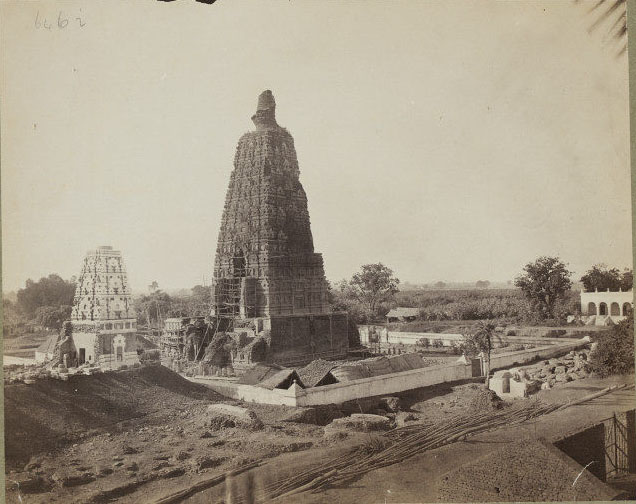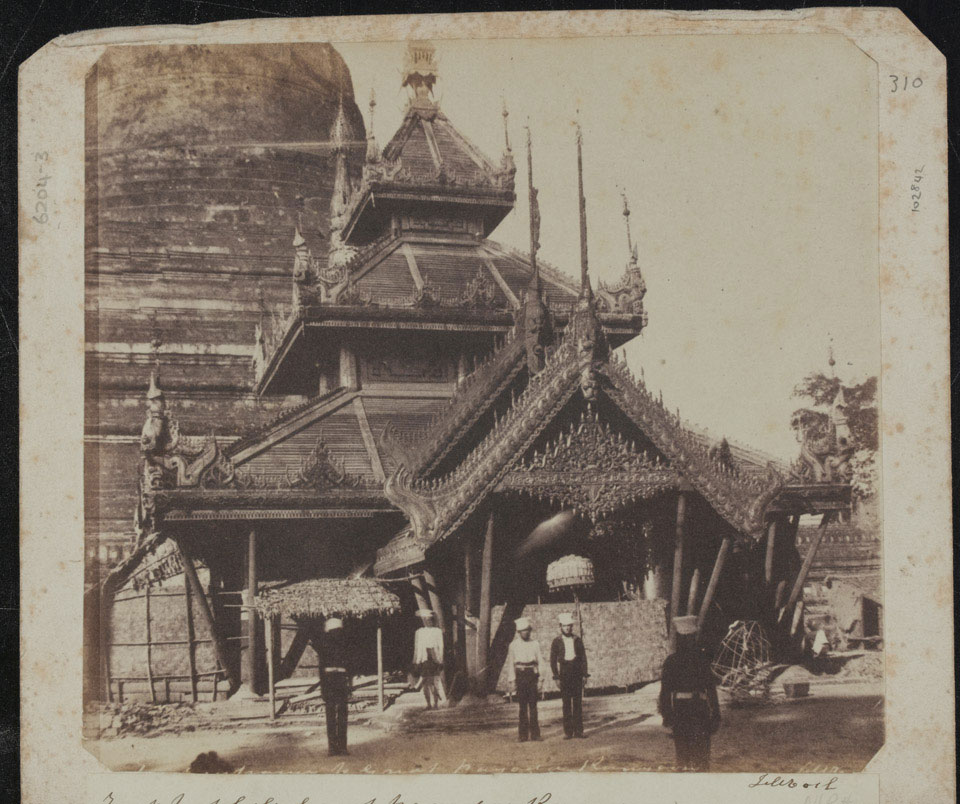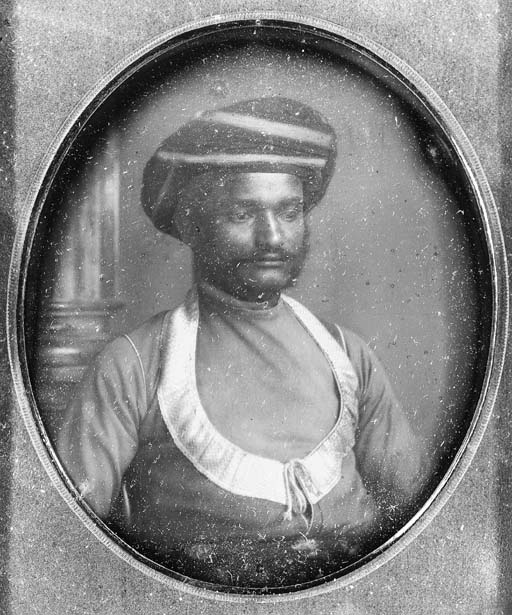Edmund David Lyon (1825 – 1891), retired Captain from British Army arrived in India from Dublin in 1862. On his arrival, he produced a series of views of Delhi, Agra, Cawnpore (Kanpur) and Lucknow in 1863-4. Lyon’s photographs of northern India were relatively not popular with the public and not well marketed in North India. Hence Lyon travelled down south to The Nilgiris and opened his photographic studio in Ootacamund (Ooty), Tamil Nadu in 1865. Lyon was appointed General Photographer for the Madras Presidency in November 1867 initially and later with Bombay government. Lyon toured and documented mainly temples of South India between November 1867 and August 1868, taking a route that included Trichinopoly, Madurai, Tanjore, Halebid, Bellary and Vijayanagara.
He photographed archaeological sites and architectural antiquities during 1867 -1868 assisted by his wife Anne Grace Lyon. The only photographer who worked at both Lucknow and Vijayanagara was Edmund David Lyon. His work in Lucknow was produced at the very beginning of his photographic career, in the early 1860s. He focused on buildings associated with the Uprising.
He was in Vijayanagara a few years later in 1868, and photographed structures systematically around a temple complex, producing a selection of views that function together as a series. He photographed the buildings and complexes and tried to replicate the visitor’s experience of walking through the structures.
Lyon also incorporates text advice for the travellers as well, for example suggesting the best approach to the site, where to stay overnight and how long the journey should take. Each photograph was assigned a number that appears on the mount of the photograph; the number then corresponds to the relevant paragraph in the booklet. One such booklet is “Notes to accompany a series of photographs designed to illustrate the ancient architecture of South India, taken for the Government and described by Captain Lyon. Edited by James Fergusson, F.R.S (London, Marion & co, Soho Square, 1870)”. And In 1871 his book ‘Notes to Accompany a Series of Photographs Designed to Illustrate the Ancient Architecture of Western India ‘was published.
He produced over 300 photographs of the ancient monuments of Madras at the request of the Madras and Bombay governments. He resolved the problems of lighting the extremely long corridors in Southern India, some of them as long as 700 feet, by creating banks of reflectors.
Edmund David Lyon mastered the new photography technology which got the imagination of the then photographers around the world. The New process became instantly popular due to its sharp and detailed positives. The process was called Wet plate Collodion. The process completely replaced the paper Calotype.
Frederick Scott Archer, an English photographer worked out a way to use Collodion on the glass as a binding medium for the light-sensitive chemicals needed to create a negative. The entire process, from coating to developing, had to be done when the plate is wet hence the process was named as “Wet Plate Collodion process”.
Although this was a much more complicated process to employ requiring a portable darkroom and a whole range of chemicals, the resulting images were perceived to be superior.
The Collodion process produced a negative image on a transparent support (glass). This was an improvement over the Calotype process, discovered by Henry Fox Talbot, which relied on paper negatives, and the daguerreotype, which produced a one-of-a-kind positive image and could not be replicated. The Collodion process thus combined desirable qualities of the Calotype process (enabling the photographer to make a theoretically unlimited number of prints from a single negative) and the daguerreotype (creating a sharpness and clarity that could not be achieved with paper negatives). Collodion printing was typically done on albumen paper.
Wet Plate Collodion process and its stunning multiple albumen prints allowed Lyon to produce more photographs for each monument that he documented and now these prints are widely found in books and numerous collections around the world.
Edmund David Lyon also published at least two novels in the 1880s: The Signora (1883) and Ireland’s Dream: a romance of the future (1888).
Reference
https://www.christies.com/lotfinder/Lot/edmund-david-lyon-1825-1891-and-various-other-4572604-details.aspx
Alternative Photography and Wet Plate: Short Description
Monumental Visions: Architectural Photography in India, 1840-1901, Sophie Gordon, Department of History of Art, School of Oriental and African Studies, University of London, 2010










